A Japandi bedroom fuses Japanese Zen and minimalism with Scandinavian functionality – the perfect wellness space for sleep and relaxation.
Here are my 9 key aspects of a Japandi style bedroom:
- Emphasis on simplicity, minimalism, and functionality
- Connection to nature with natural elements and materials
- Neutral, muted color palette with subtle accent colors
- Clean-lined, stylish furniture serving a purpose
- Layering eco-friendly Japandi textures and textiles for warmth
- Soft, warm, and adjustable lighting for ambiance (a fireplace works wonders if you have the space)
- Minimalist, nature-inspired artwork and accessories
- Low-profile platform beds and organic, comfortable bedding
- Organized, decluttered spaces with hygge elements for coziness
In a world that’s moving faster than ever, I think we could all benefit from a sanctuary where we can retreat and recharge.
Enter the Japandi style bedroom – which is a blend of Japanese and Scandinavian design philosophies that creates a soothing and serene sleeping space.
In this article, I reveal 11 Japandi bedroom ideas, styles, and tips to help you create your very own Japandi haven – methods I’ve tried and tested in my designs.
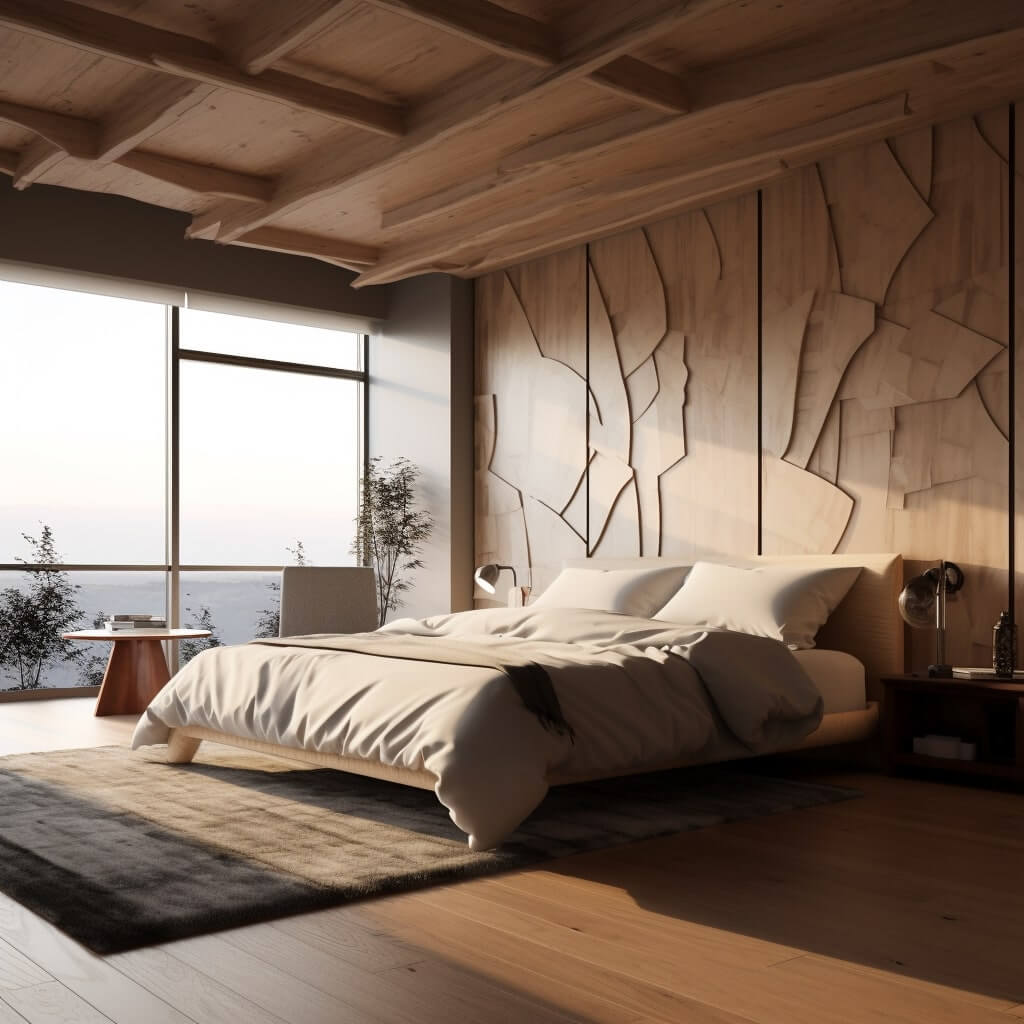
1 – What is Japandi interior design?
The Japandi style is where the East meets the North, marrying the zen aesthetics of Japanese design with the functionality and cozy warmth of Scandinavian hygge.
It embraces simplicity, functionality, and a deep connection with natural elements.
And I think if there’s any room in the home that years for these design principles, it’s the bedroom.
It’s the place for meditation, sleep, relaxation, and reflection.
So, Japandi bedrooms should be spacious (even if small), practical (which has a calming effect on us), minimalistic (which de-clutters our psyche), and aesthetically elegant.
So, how do you create the Japandi style in your bedroom? Start with your colour pallet.
2 – Japandi Bedroom Color Palette
In my opinion, a Japandi bedroom begins with a subtle Japandi color palette.
We’re talking wallpaper to begin with.
I love neutral and muted tones such as beige, gray, and off-white lay the foundation for a calming atmosphere, while accent colors like forest green, indigo, and terracotta add depth and personality.
Remember, less is more in Japandi style, so keep your color choices refined and deliberate.
Here are some example color palettes I’ve put together from my designs:
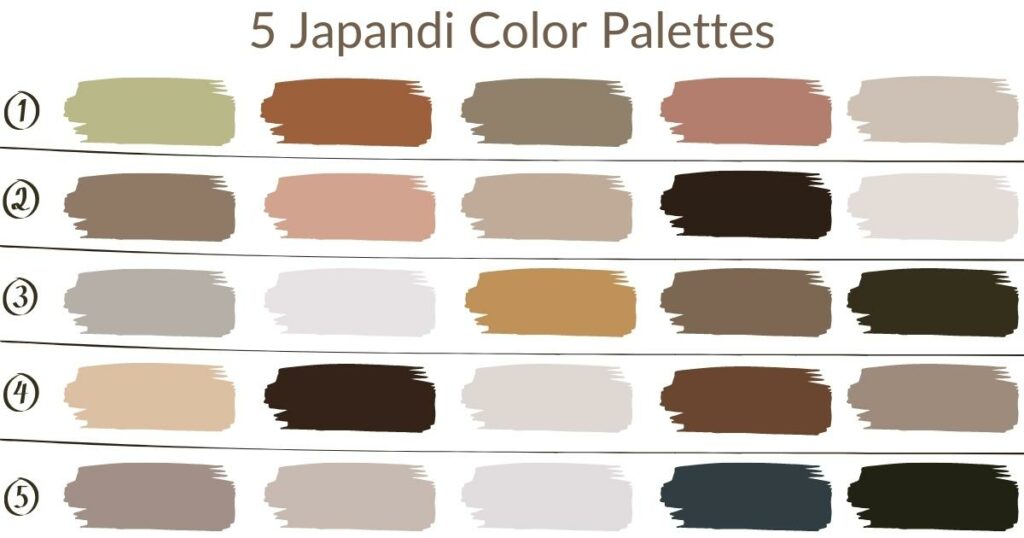
3 – Japandi Bedroom Furniture
Selecting the right Japandi furniture for your bedroom means choosing pieces that are both functional and stylish.
I look for items that incorporate natural materials like wood and rattan, and prioritize clean lines and uncluttered forms.
In a Japandi wardrobe I look for:
- Minimalist in design with clean lines
- Made from natural materials such as wood, bamboo, or rattan
- A neutral color that complements your overall room palette
- Functional and efficient storage, incorporating sliding doors or open shelving
For Japandi beds I look for:
- A low-profile platform bed for a grounded, minimalist sleeping experience
- Made from natural materials such as wood or metal with a simple, clean design
- In line with your bedroom color palette
- Topped with organic and comfortable bedding, including natural latex mattresses, cotton sheets, and linen or wool duvets
And as for your other bedroom furniture, I focus on:
- Sticking to functional pieces that serve a specific purpose and that you get everyday value from.
- Trying to incorporate open and airy designs, such as floating shelves or open-frame furniture, to maintain a sense of spaciousness.
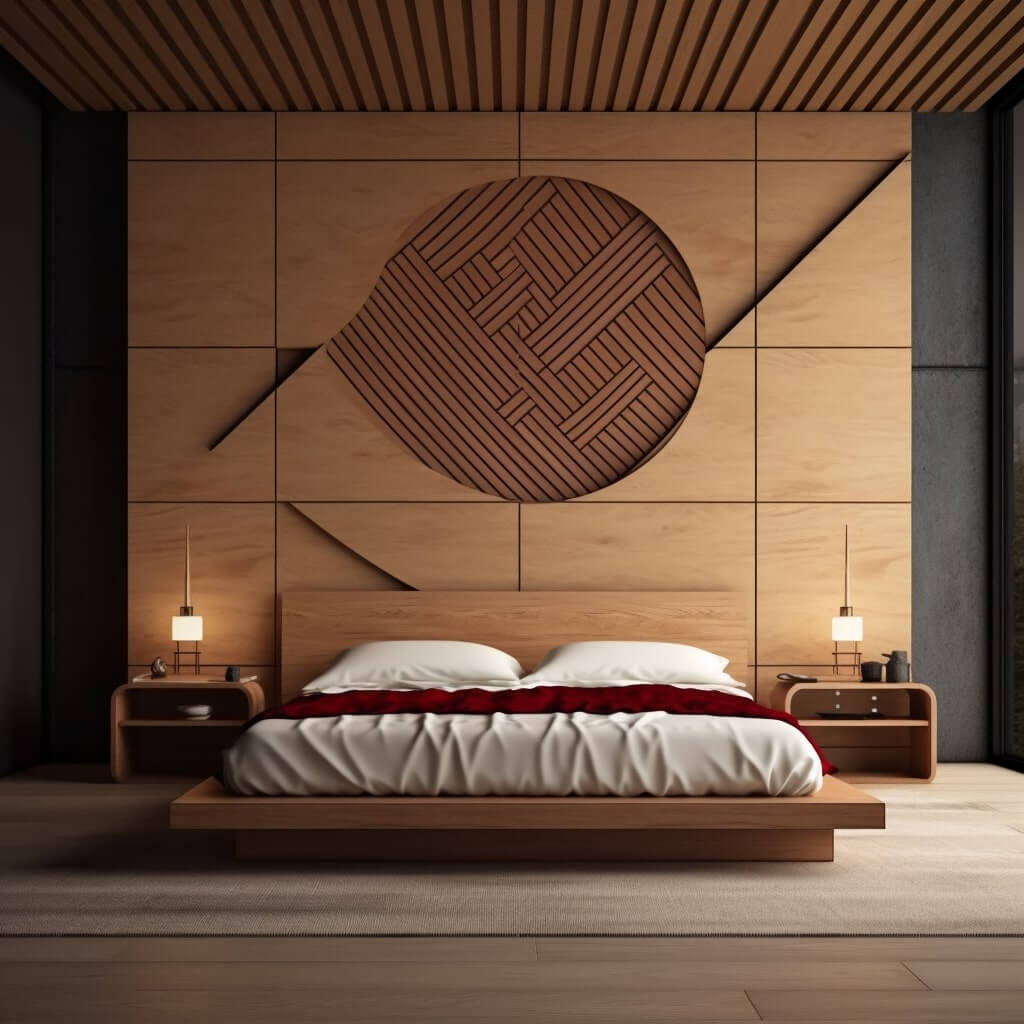
4 – Incorporating Natural Elements
Where possible, I like to bring the outdoors into my home by incorporating natural elements throughout my Japandi bedrooms.
Introduce plants for a touch of greenery and vitality, and use wood and stone accents to create an organic, earthy feel which I love.
5 – Balance Form and Function
In a Japandi bedroom, every item should serve a purpose while also contributing to the overall aesthetic.
I encourage picking out storage solutions that are visually appealing and practical, such as floating shelves or woven baskets.
This fits with the Scandinavian aspects of Japandi design – functionality.
I’m a firm believer that when your home makes practical sense and is easy to live in, it helps us feel at peace and comfortable. This is especially important in small spaces – take note if you’re designing your apartment in Japandi style.
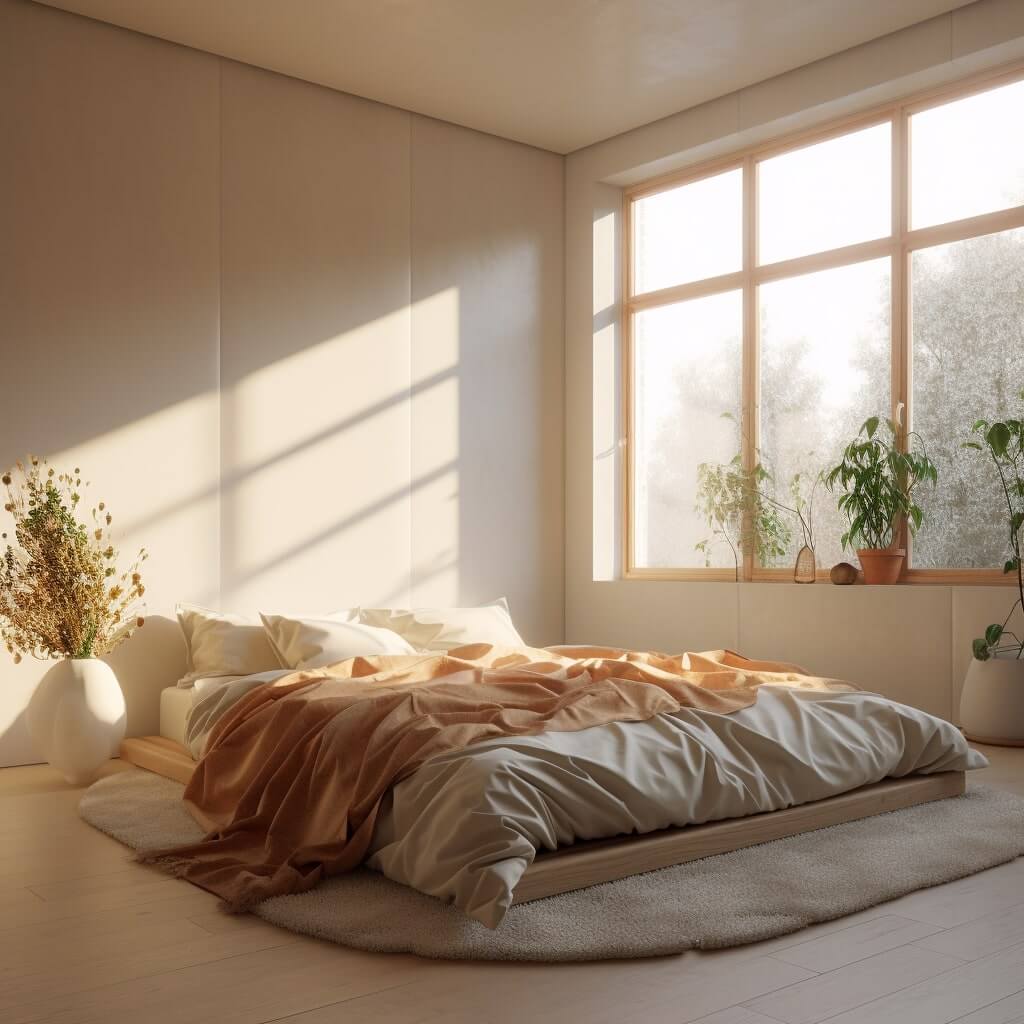
6 – Textures and Textiles
Layering linens and textiles is key to achieving a cozy, inviting atmosphere in your Japandi bedroom.
My preference is natural, eco-friendly materials like cotton, linen, and wool are great. And I like to experiment with textures to create a sense of depth and warmth.
7 – Lighting and Ambiance
Japandi lighting is soft and warm, and it’s essential for creating a cozy but tranquil bedroom.
Floor lamps, wall sconces, or pendant lights with dimmers are brilliant for lighting your bedroom. I try to avoid relying on main overhead light fixtures where possible – they’re usually too bright and direct for a relaxing space.
And don’t forget to incorporate candles and lanterns to enhance a peaceful ambience and invite moments of quiet reflection – this is an easy win.
8 – Creating a Zen-like Space
I think that a Japandi bedroom should be a sanctuary for the mind as well as the body.
I suggest trying to organize your space to promote clarity and focus, and think about incorporating meditation and mindfulness, such as a small altar, a zen garden, or a meditation cushion.
Here’s another example for some ideas:
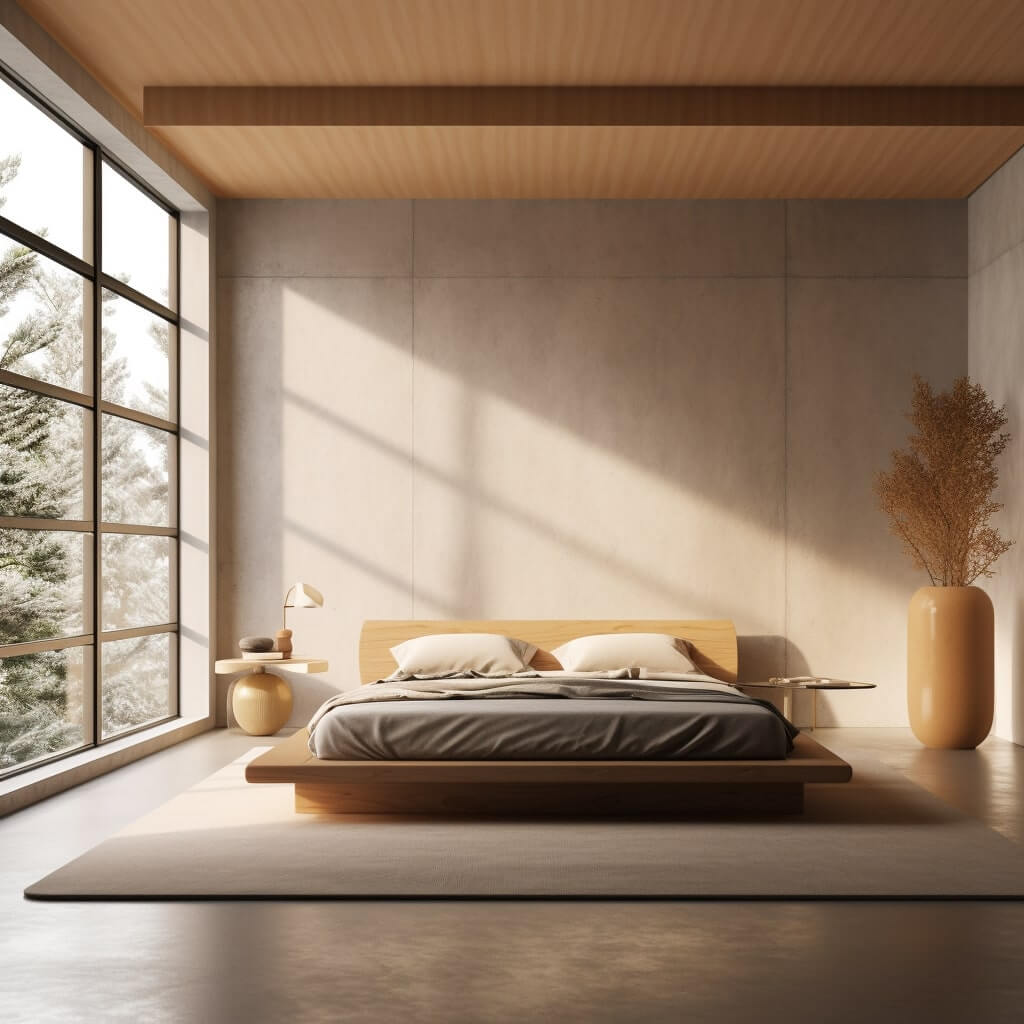
9 – Art and Accessories
When choosing Japandi decor and artwork for a Japandi bedroom, I like to focus on minimalist, nature-inspired art that fits the overall design.
I recommend choosing meaningful and aesthetically pleasing items that resonate with you, but try to avoid overcrowding your space. Remember that in Japandi style, less is often more.
Check out some of these intriguing Japandi wall art ideas too.
10 – The Japandi Bed
At the heart of your Japandi bedroom is your bed itself.
For me, a Japandi style bed is typically a low-profile platform bed (a Japandi beframe is very low) with organic, comfortable bedding like a natural latex mattress, breathable cotton sheets, and plush duvets.
To supplement a relaxing sleep, you could try some Japandi bedding in the form of weighted blankets or body pillows for extra comfort and support at night – I can’t sleep without my weighted blanket anymore…
11 – The Hygge Elements
While Japandi style emphasizes simplicity and minimalism, I think it’s important to balance this with cozy, hygge-inspired design.
I usually try to add soft textiles like sheepskin rugs, faux fur throws, and chunky knit blankets to create that sense of warmth.
Don’t forget to make it personal to you and your memories – things like a cherished book collection, your favourite scented candle or family photos make us feel more at home – just as long as they’re not creating a sense of clutter in your bedroom.
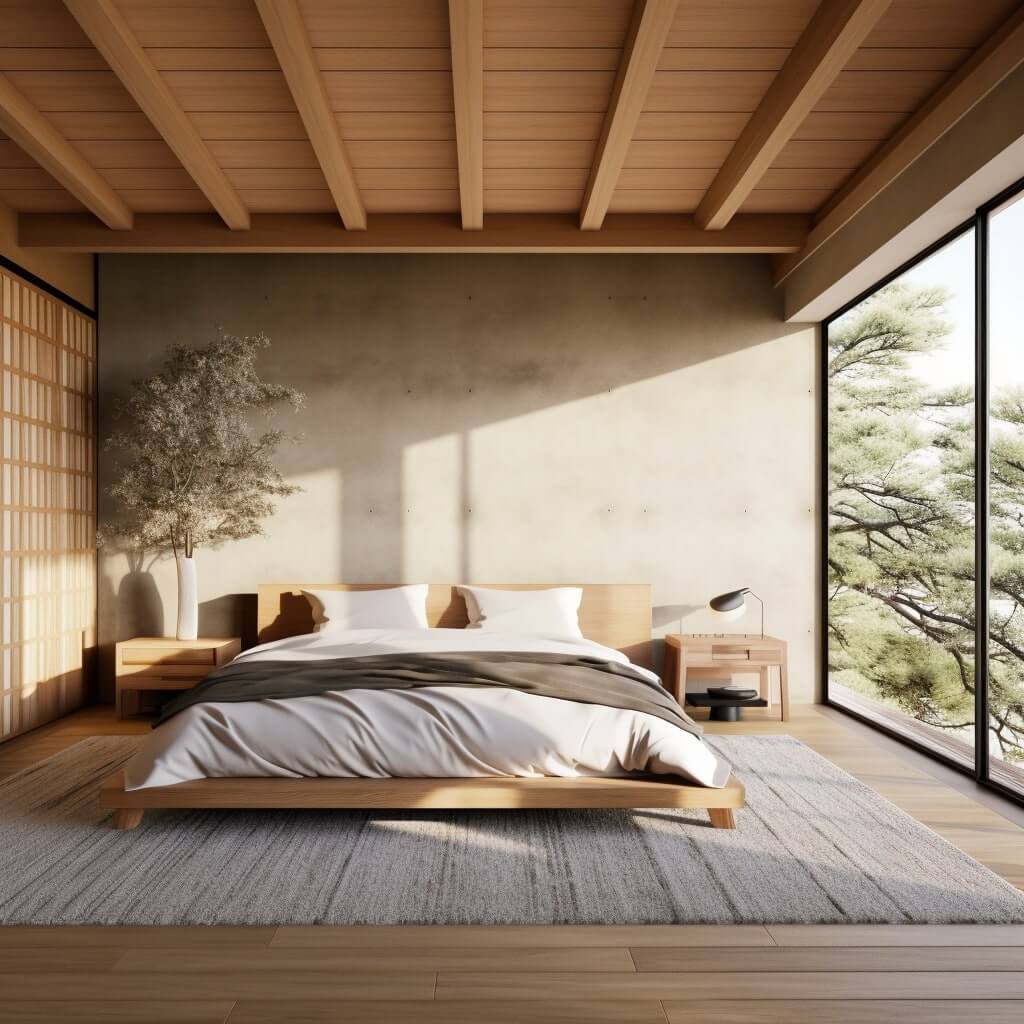
FAQs
What is a Japandi style bedroom?
A Japandi style bedroom combines Japanese minimalism with Scandinavian simplicity, featuring clean lines, muted colors, and natural materials. The space evokes a sense of calm, warmth, and harmony, perfect for a relaxing sleep environment.
What is the difference between Scandi and Japandi?
Scandi style focuses on simplicity, functionality, and cozy warmth, while Japandi blends this with Japanese minimalism, organic shapes, and craftsmanship. Japandi fuses these styles for a balanced, serene space.
What Colours are used in Japandi style?
Japandi colors typically include neutral, earthy tones such as whites, greys, and beiges, alongside soft greens, blues, and pale wood hues. These muted colors create a calming atmosphere.
What is the difference between Zen and Japandi style?
Zen style prioritizes tranquility, meditation, and nature-inspired elements, while Japandi combines Japanese minimalism and Scandi functionality. Both styles promote a soothing atmosphere, but Japandi incorporates more Scandinavian design elements.
What wood is used in Japandi furniture?
In Japandi furniture, woods like oak, ash, and beech are commonly used. These light, pale woods enhance the natural, minimalist aesthetic and add warmth to the space.
What is the difference between boho and Japandi style?
Boho style is eclectic, colorful, and textured, while Japandi is minimalist, serene, and balanced. Boho embraces a mix of patterns and materials, whereas Japandi focuses on simplicity, clean lines, and natural elements.
How do you make a classy bedroom?
To make a classy bedroom, choose a neutral color palette, invest in high-quality, timeless furniture, and use layered lighting. Incorporate tasteful, minimal décor and keep the space organized to create an elegant, sophisticated atmosphere.







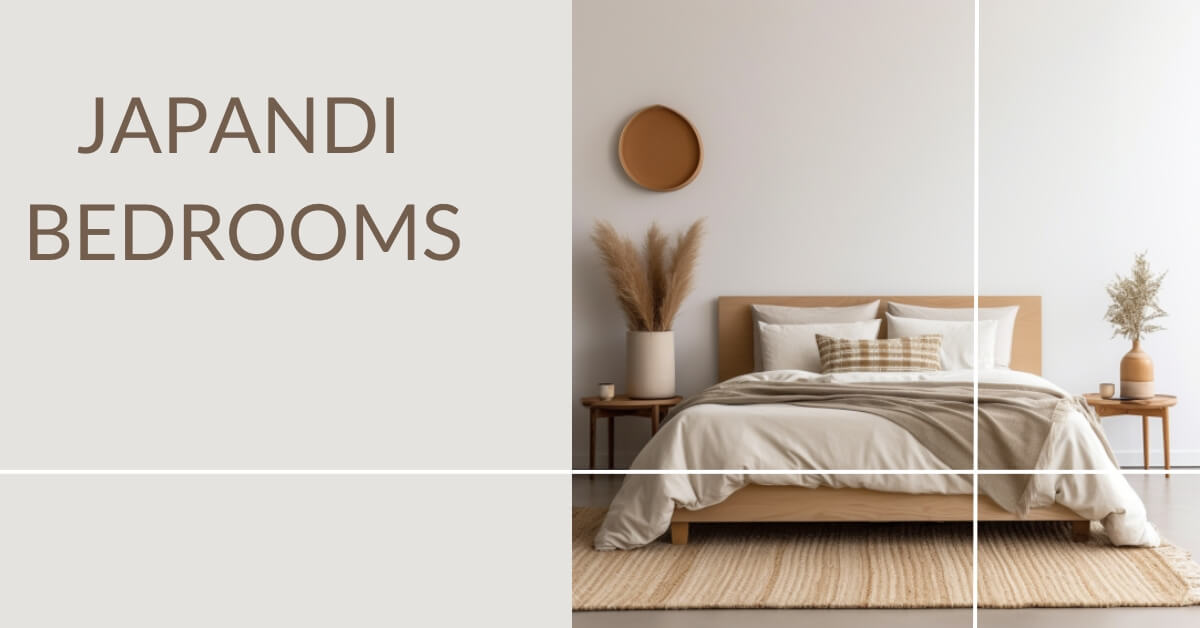
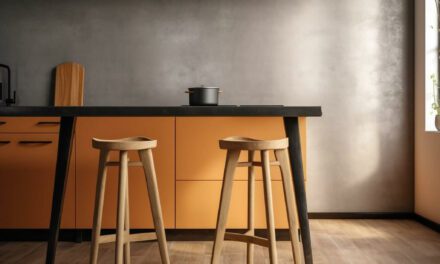
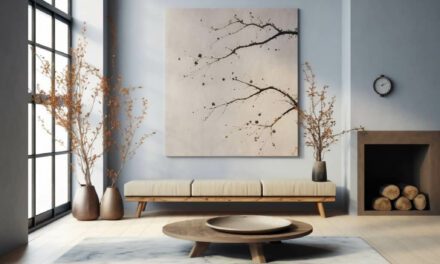
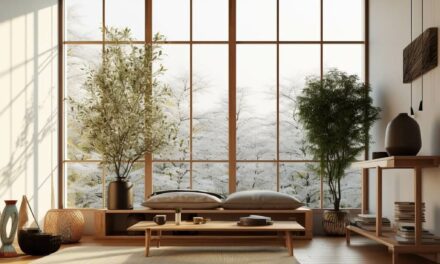
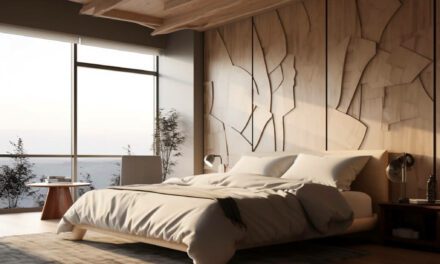
Thanks a bunch for sharing this with all of us you actually know what you are talking about! Bookmarked. Kindly also visit my website =). We could have a link exchange arrangement between us!
Aw, this was a really nice post. In idea I wish to put in writing like this moreover ?taking time and actual effort to make an excellent article?however what can I say?I procrastinate alot and certainly not appear to get one thing done.